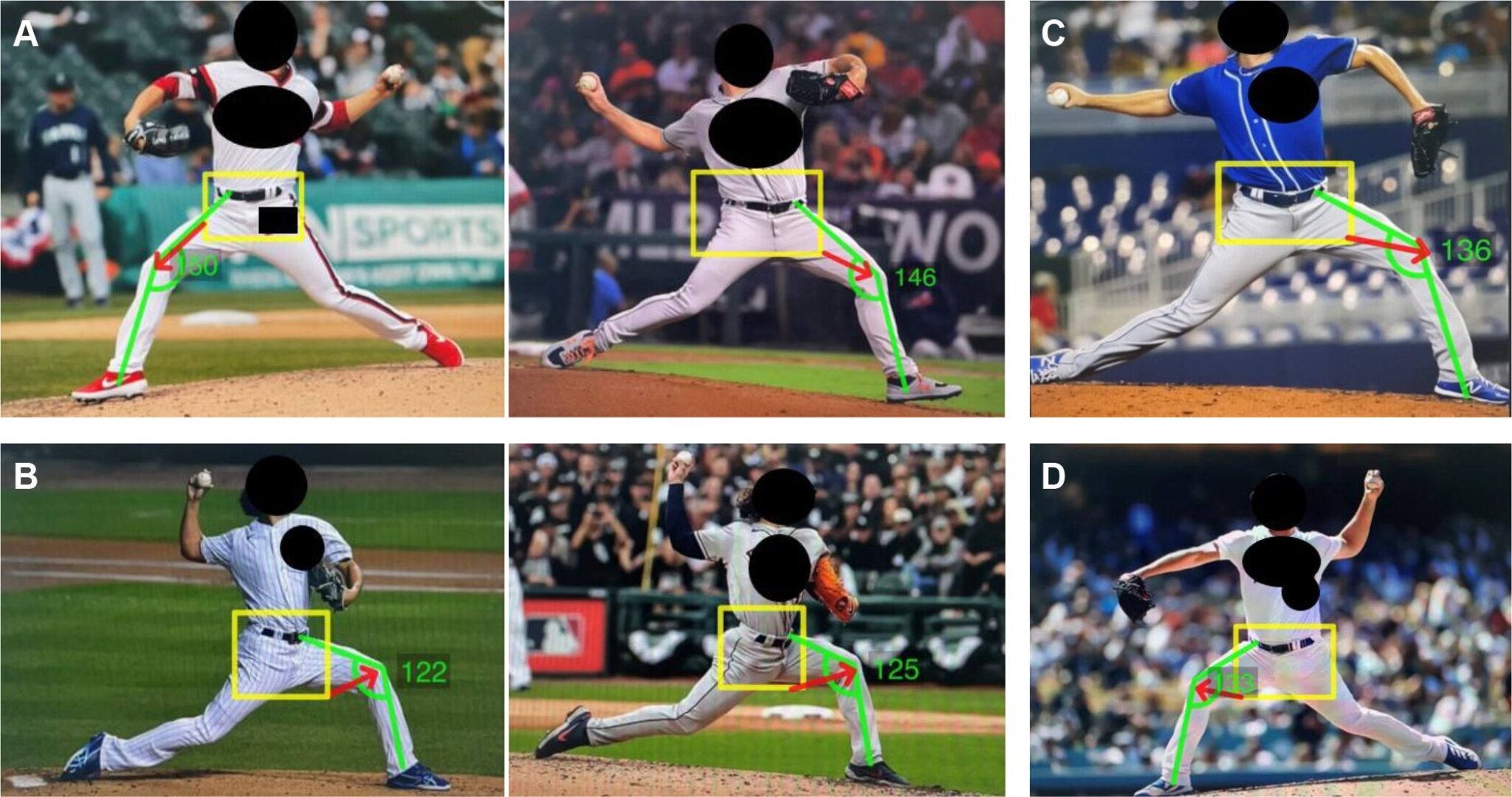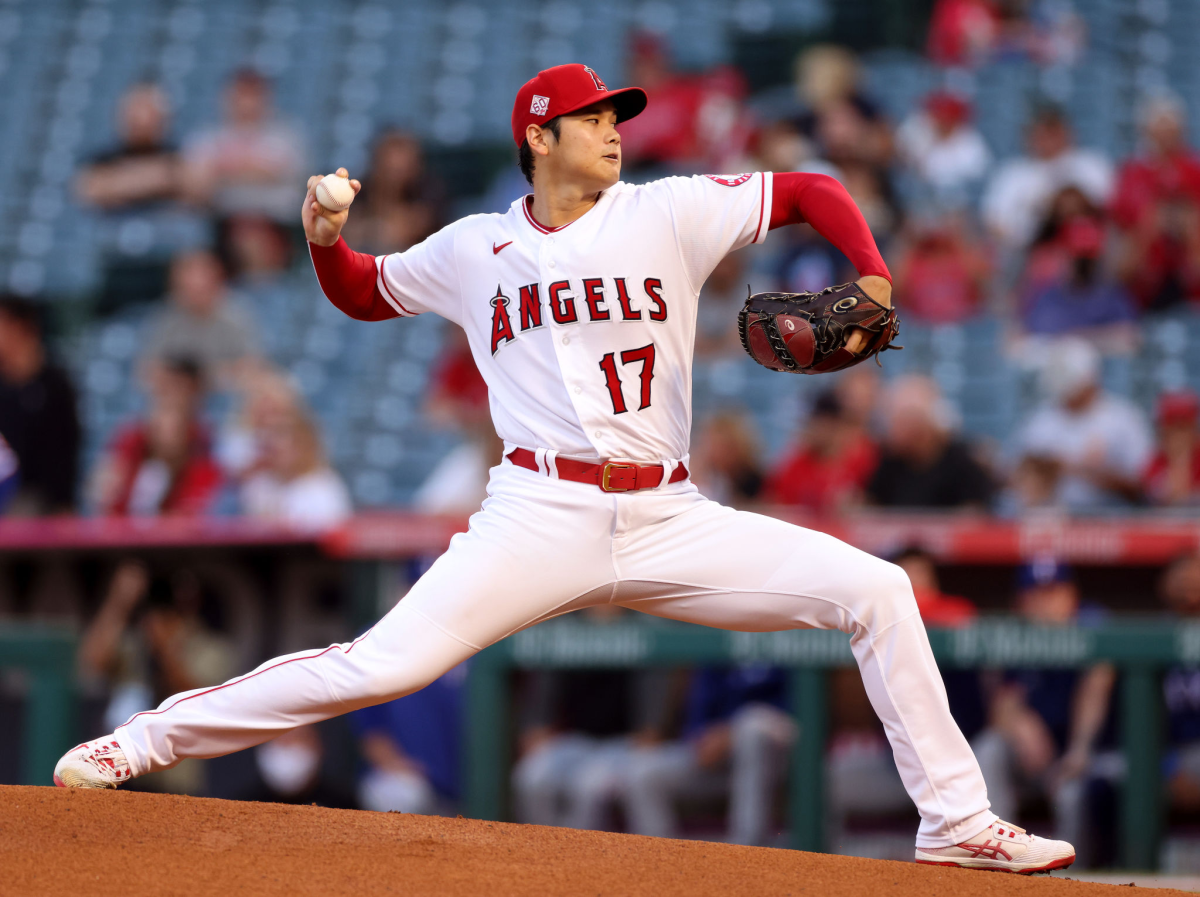Tall and Fall or Drop and Drive?
What Are They?

Tall and fall (TF) (pictures A and C) was something I remember hearing when I was starting travel ball back 25 years ago, and it was a common cue for new pitchers. The concept is simple, get going linearly down the mound and let gravity pull you into your throw. The key mechanic through this paper is the pelvis higher than the knee when they land on their stride foot. But does this strategy still hold up today, especially when talking about injury?
Drop and drive (DD) (pictures B and D) is the newer style, and largely has roots over in Japan and Korea. This doesn’t mean it’s not well used, but comparatively in the MLB it is considerably less. DD is characterized by the pelvis at or below the level of the knee when the stride foot makes contact with the ground. Does this style lend itself to similar injury rates, or are they different?
Tall and Fall vs. Drop and Drive For Injury
During the 2019 MLB season, analysis for TF and DD styles was performed with 412 (62.4%) of pitchers using TF, and 248 (37.6%) of pitchers using DD. These pitchers were statistically the same for most metrics including: age, weight, BMI, and fastball velocity. Only height was statistically different with TF being slightly taller (190 +/- 5 cm) to DD (189 +/- 5.75 cm) . And to be fair, that is really not that much of a difference.
But, how did the injury rate stack up? Of those 660 pitchers, 150 had an upper extremity injury. 112 TF and 38 DD. But that is 27% of TF and only 15% of DD that sustained an injury. For the big Tommy John surgery, 12 total pitchers had to undergo surgery. 10 of those 12 used the TF style.
This appears to be a timely article with several high profile pitchers already out in this young MLB season with UCL injuries. But this article is one piece of the puzzle when preventing arm injuries. Through research we also know a less horizontal arm release, appropriate volume and intensity with training, and waiting till growth plates close to start weighted ball training are all helpful in lowering UCL injury. But, this isn’t all roses. TF style tends to load more stress into the elbow, but DD loads more stress into the shoulder. So at the end of the day, intelligent training is paramount to decreasing injury rates.

Conclusion
DD carries a lower risk for UCL strain as it mitigates forces on the elbow, but increases force in the shoulder. This compared to TF style is still superior as it relates to the elbow.
As always, please feel free to reach out to me if you need help or have questions. The longer I do this, the more I see antiquated ideas and techniques used by well meaning coaches, but unfortunately they put players at risk from a young age due to lack of knowledge in the anatomical and biomechanical arenas.
Dr. Klaus